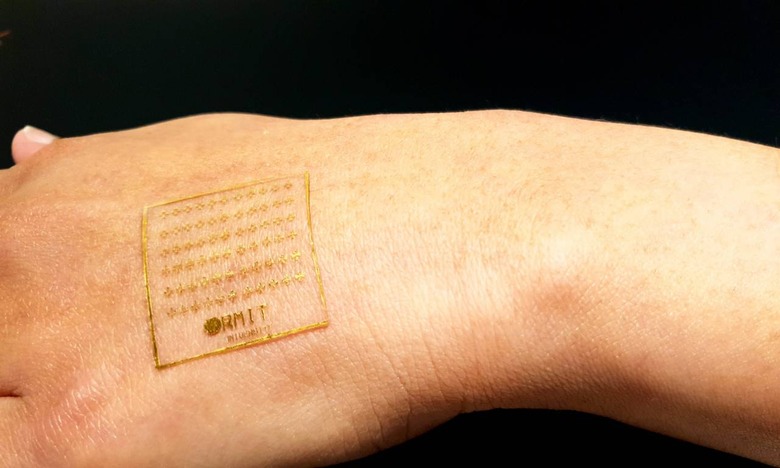New Artificial Skin Could Let Robots React To Pain Like A Human
Researchers at RMIT University have developed a new electronic artificial skin that can react to pain just like real skin. The artificial skin opens the door for improved prosthetics, smarter robotics, and non-invasive alternatives to skin grafts. Researchers say that the prototype device can electronically replicate the way human skin senses pain.It mimics the near-instant feedback response that humans have with the ability to react to painful sensations with the same fast speed that nerve signals can use when sending signals to the brain. Pain is an essential method that humans use to help avoid damage that could potentially lead to death.
Skin is the largest sensory organ of the human body, and humans sense things all the time through the skin, the pain response that only kicks in at a certain point. We feel pain when something is too hot or too sharp and could cause potentially life-threatening damage. The artificial skin can react instantly to pressure, heat, or cold when a painful threshold is reached.

Alongside the pain-sensing prototype, the team was also able to develop devices using stretchable electronics to sense and respond to changes in temperature and pressure. Researchers say with more development, the stretchable artificial skin could be used in the future for non-invasive skin grafts where the traditional approach is not viable or didn't work.
The artificial skin uses stretchable electronics that combined oxide materials with biocompatible silicone to create a transparent, unbreakable, and wearable electronic as thin as a sticker. A temperature-reactive coating 1000 times thinner than a human hair is used based on material that transforms in response to heat. Brain-mimicking memory features use electronic memory cells that imitate how the brain uses long-term memory to recall and retain previous information. The pain sensor uses all three of those coatings while other prototypes use only one.
